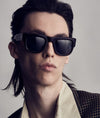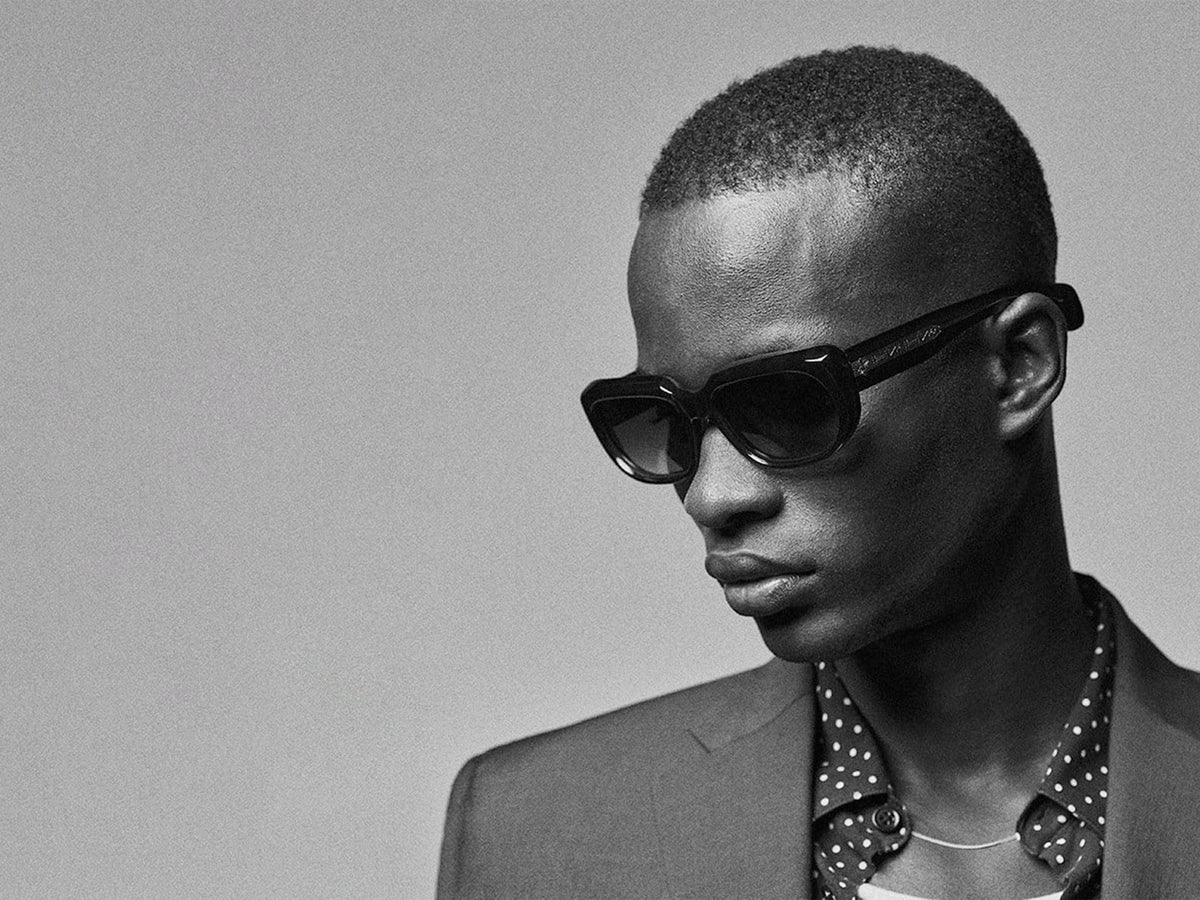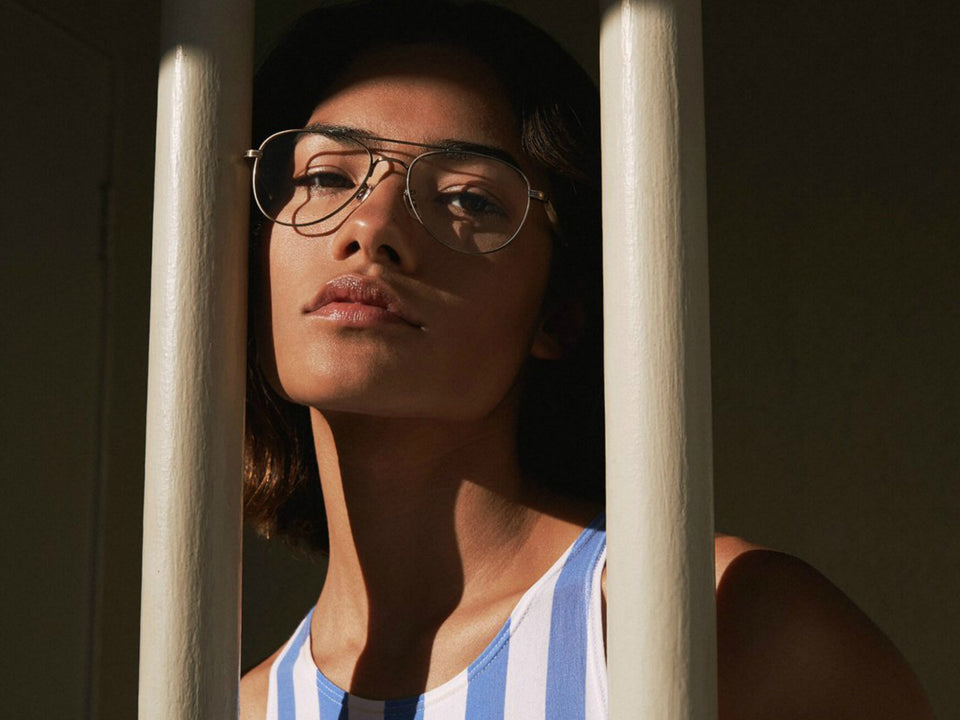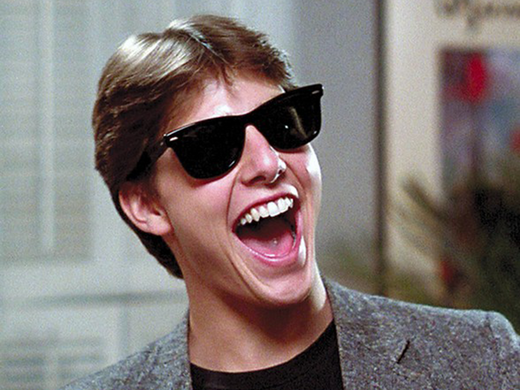When it comes to ‘classic eyewear’, a few names hog all the glory. Sure, there’s nothing wrong with aviators or wayfarers, but surely some other designs deserve to be talked about from time to time? They might be misunderstood, but wraparound sunglasses, in all their many guises, have most definitely reached classic status. Here’s the story behind ‘em…
Whilst names like aviators or wayfarers are pretty much set in stone—used to describe very specific shades, the term ‘wraparound sunglasses’ can cover a huge expanse of styles—from the super-classic to the hyper-futuristic. But as you’d expect, they’ve all got one thing in common, they’re frames that wrap right around your face to help keep the sun’s pesky rays out of your precious eyes.
"This rise in petrol-powered leisure required serious clothing—from hard-wearing leather jackets to sturdy denim jeans. The same applied to eyewear."
So that covers what they are, but where did they come from? Again, things aren’t exactly set in stone. You could probably argue that the snow-goggles first carved by Inuits hundreds of years ago, with their sleek shape to follow the curve of the face, could be called wraparounds, but the common consensus is that wraparounds as we know them today evolved from aviators in the 60s. The logic was simple—with bigger lenses, and less space to the side of the frames, there’d be more coverage and less glare.
As ever, the design was born from function. By the mid-50s WW2 austerity was fading away in the UK and the US, and suddenly luxuries like motorbikes or cars weren’t quite as unattainable. Teenagers keen for freedom desperately saved up for a second-hand scooter, whilst motorbike clubs and race-tracks cropped up across the land.
This rise in petrol-powered leisure required serious clothing—from hard-wearing leather jackets to sturdy denim jeans. The same applied to eyewear. Not only was glare a constant problem, but dirt flicking into a biker’s eye as they slid around a corner could be a deadly hazard—so vision and coverage was paramount.
Goggles did the job, but they were often bulky and uncomfortable, so those looking for something a bit more wearable sought out sturdy, large-lensed frames that still did the job, without making them look like a bargain-bin Biggles.
The curved browline Ray-Ban Olympians sported by Peter Fonda in Easy Rider, or the iconic frames worn by Clint Eastwood in the first Dirty Harry for a prime example of this era of wraparounds. In fact, the Dirty Harry series serves as a pretty good case study in wraparound design evolution. In 1971, Inspector Harry Callahan’s glasses (Ray-Ban Baloramas, if you were wondering) are relatively classic and low-key—whilst by 1983’s Sudden Impact, he’s gone full Tron-mode in a pair of rimless Gargoyles ANSI Classics (the same shades worn by the Terminator, no less).
"Power suits gave way to Klein mountain bikes, indoor climbing walls spread like wildfire, and seemingly everything—even the humble maize snack—was marketed as ‘X-Treme’."
By the 80s companies that started out making goggles for motocross and skiing were working with new, lightweight materials to make eyewear with sports firmly in mind—creating a whole new industry in the process. Whilst in the 70s only riders with a prescription would think of wearing glasses during the Tour De France, by 1987 over half the peloton was wearing neon-framed Oakleys. Function was important, but so too was style—and the wild colours and bold designs sat perfectly with the day-glo jerseys of the day.
The rise of the wraparound only continued into the 90s, as a new wave of adventure sports seeped into the public consciousness and money-hungry yuppies morphed into more wholesome ‘arpies’—’affluent recreating professionals’. Power suits gave way to Klein mountain bikes, indoor climbing walls spread like wildfire, and seemingly everything—even the humble maize snack—was marketed as ‘X-Treme’.
Even those who didn’t spend their weekends kayaking down Niagara Falls at least wanted to look like they did—and in the same way aviators weren’t just worn by actual aviators in the 60s, these wraparound sports shades caught on way beyond the gaggles of adrenaline athletes, to be seen on faces as varied as Layne Staley and JFK Jr. With units shifting and money to burn, eyewear companies could afford lavish experimentation; pushing the boundaries with built-in MP3 players and increasingly progressive design.
As with any trend the tide eventually turned for the wraparound, and thanks to the influx of cheap service station knock-offs and the omnipresence of nu metal, by the mid-00s they sat alongside flame shirts and flip-flops as subjects of scorn. This negativity was a bit short-sighted—and now it’s accepted that the real wraparounds were functional, thought-out creations, designed with purpose and flair. Guy Fieri might be a fan, but so is Yoko Ono.

Jacques Marie Mage's Donovan frames pay homage to the wraparound sunglasses worn by the Hurdy Gurdy Man at Newport Jazz fest. '65
Today brands like Jacques Marie Mage and Garrett Leight make their own versions of the wraparound style—taking influence from the designs of the 60s and early adopters like Donovan, George Harrison and Jean Seberg. They’re probably a bit too nice to be wearing whilst you skid your old Honda 250 scrambler round a field, but that’s not to say they wouldn’t be up to the task…







